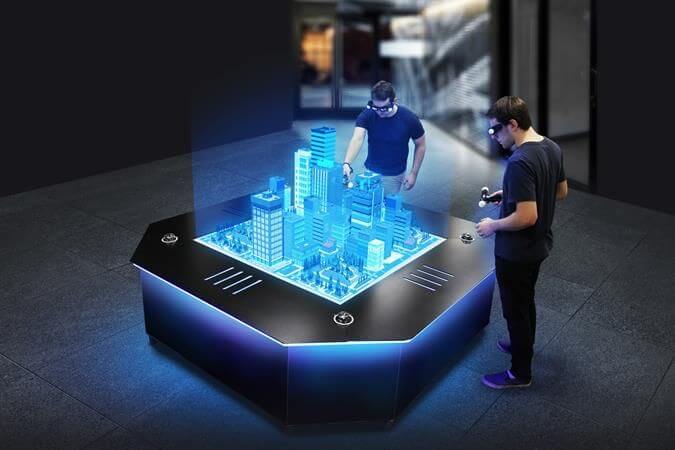Touchable hologram technology, once confined to the realm of science fiction, is rapidly becoming a tangible reality. Recent advancements in materials science, computer graphics, and haptic feedback are converging to create interactive 3D experiences that blur the line between the physical and digital worlds. The creation of touchable holograms involves a complex interplay of several key engineering principles and technological components.
One of the primary challenges in creating touchable holograms lies in the method of display. Traditional holograms, while visually impressive, are intangible projections of light. To create a touchable experience, engineers have explored various approaches, including the use of volumetric displays. These displays project numerous images onto a screen that moves at a rate faster than the human eye can comprehend. This creates the illusion of a three-dimensional object floating in space. However, early volumetric displays used rigid materials for the projection surface, posing a risk of injury if touched.
Researchers at the Public University of Navarra (UPNA) have pioneered a solution to this problem by using an elastic material for the diffuser. The use of elastic materials allows users to touch and manipulate the holographic image without damaging the system or causing injury. This innovation involves the use of elastic bands as a diffuser, enabling users to directly interact with the hologram by inserting their hands to grab and manipulate virtual objects. To ensure the image remains stable and accurate despite the deformation of the elastic material, the team implemented image correction techniques. This involves predicting how the image should appear if the diffuser were not elastic and adjusting future oscillations to accommodate manipulation.
Another approach to creating touchable holograms involves the use of precisely controlled jets of air. This method, developed by researchers at the University of Glasgow, pairs computer-generated graphics with carefully directed airflows to create the sensation of touch on the user's fingers, hands, and wrists. The system uses mirrors arranged in a pyramid shape, where users can insert their hands and interact with computer-generated objects floating in the space. A sensor tracks the movements of the user's hands and fingers, and a single air nozzle directs jets of air to create complex sensations of touch.
Ultrasound is another key technology used to produce touchable holograms. Researchers at the University of Bristol's Department of Computer Science have used ultrasound to develop 3D shapes in mid-air that can be touched and felt. The holograms appear visible and tangible because they push away the surrounding air or liquid, creating disturbances that are perceived as 3D objects.
Haptic feedback technology also plays a crucial role in enhancing the realism of touchable holograms. Haptic feedback uses touch to communicate with users, encompassing a variety of sensations such as vibration, pressure, pain, temperature, and the position and movement of the body in space. By incorporating haptic feedback, engineers can create a more immersive and realistic experience, allowing users to feel the texture and shape of the virtual objects they are interacting with.
Despite the significant progress made in touchable hologram technology, several engineering challenges remain. One challenge is improving the resolution and depth control of holographic images. Existing holographic training systems often suffer from poor axial resolution and inter-plane cross-talk, resulting in blurred images. Another challenge is creating dynamic holographic projections that can change in real-time. Most current spatial light modulator (SLM) technology relies on projecting many low-grade images, which limits the overall display resolution. Cost and accessibility also remain significant barriers, as the advanced projectors, SLMs, and other optical components required to create high-quality holographic images are expensive.
Despite these challenges, the potential applications of touchable hologram technology are vast and transformative. In healthcare, touchable holograms could revolutionize telemedicine, surgical planning, and diagnostics, offering a more interactive and precise approach to patient care. In education, touchable holograms could provide students with enriched learning experiences, allowing them to interactively explore complex subjects in three dimensions. In the automotive sector, holographic displays could replace traditional car dashboards, providing real-time traffic information, navigation data, and entertainment features. The entertainment and gaming industries also stand to be revolutionized, with gamers being able to interact with characters and objects in a more natural way.

















